Abstract
The ability of indigenous Rhizobium leguminosarum and Rhizobium meliloti to use organic nutrients as growth substrates in soil was assessed by indirect bacteriophage analysis. A total of 17 organic compounds, including 9 carbohydrates, 3 organic acids, and 5 amino acids, were tested (1,000 μg g−1) in three soils with different cropping histories. Four additional soils were screened with a glucose amendment. Nutrient amendments stimulated growth of indigenous rhizobia, allowing subsequent replication of indigenous bacteriophages. Phage populations were enumerated by plating soil extracts on 19 R. leguminosarum and 9 R. meliloti indicator strains, including root nodule isolates from the soils assayed. On the basis of indirect phage analysis, all soils contained native rhizobia similar to one or more of the indicator strains, although not all indicator strains were detected in soil. All organic compounds stimulated growth of indigenous rhizobia, but the growth response varied for each rhizobial strain depending on the nutrient, the nutrient concentration, and the soil. Indigenous rhizobia readily utilized most organic compounds except phenylalanine, glycine, and aspartic acid. The ability of indigenous rhizobia to utilize a wide range of organic compounds as growth substrates in situ indicates their ability to successfully compete with other soil bacteria for nutrients in these soils.
Full text
PDF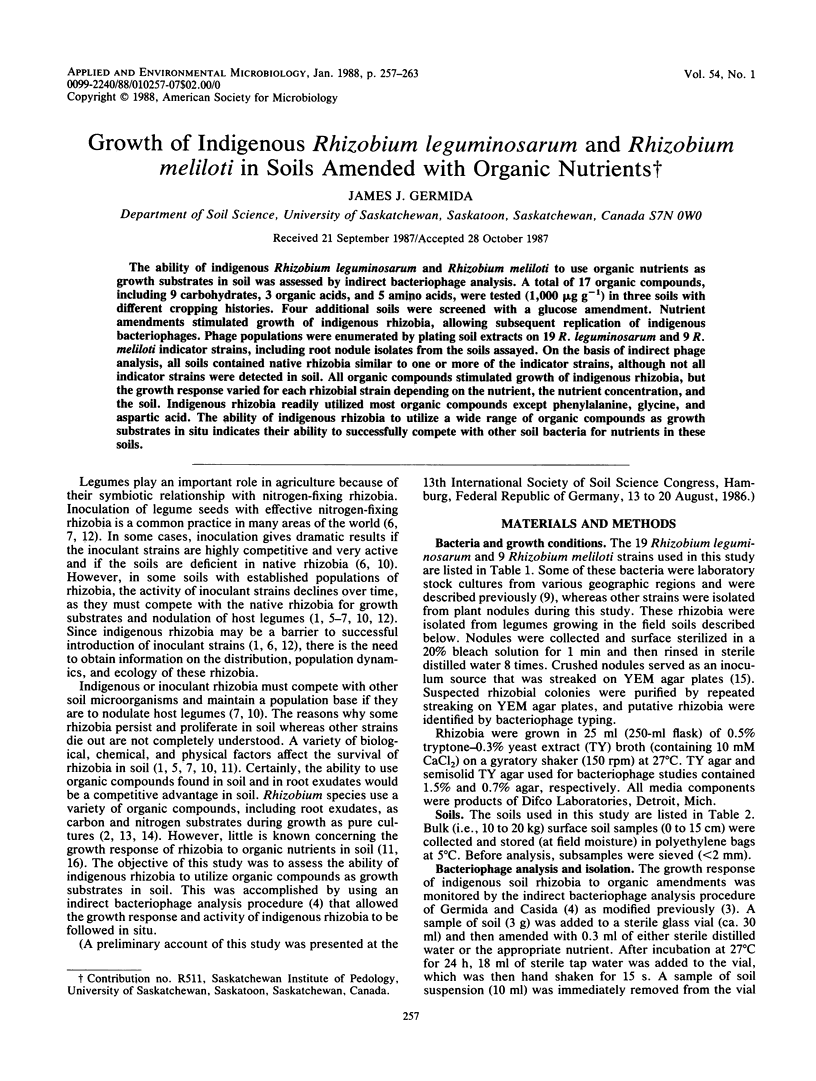
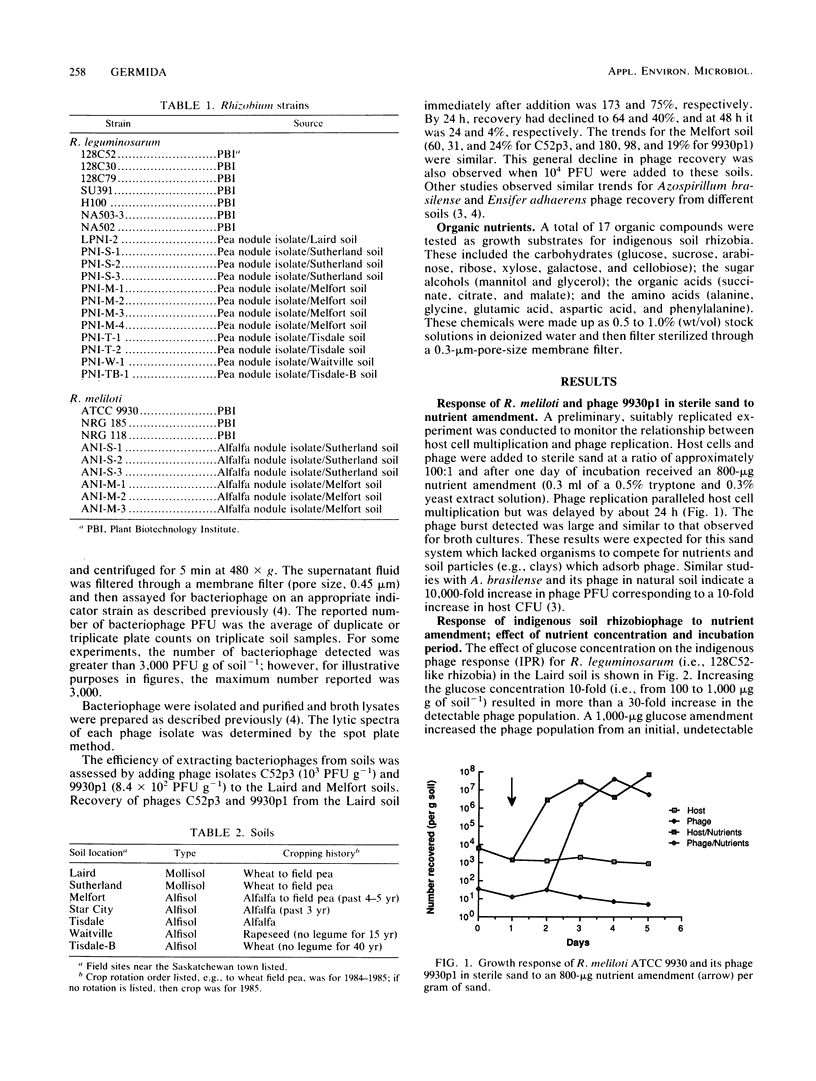

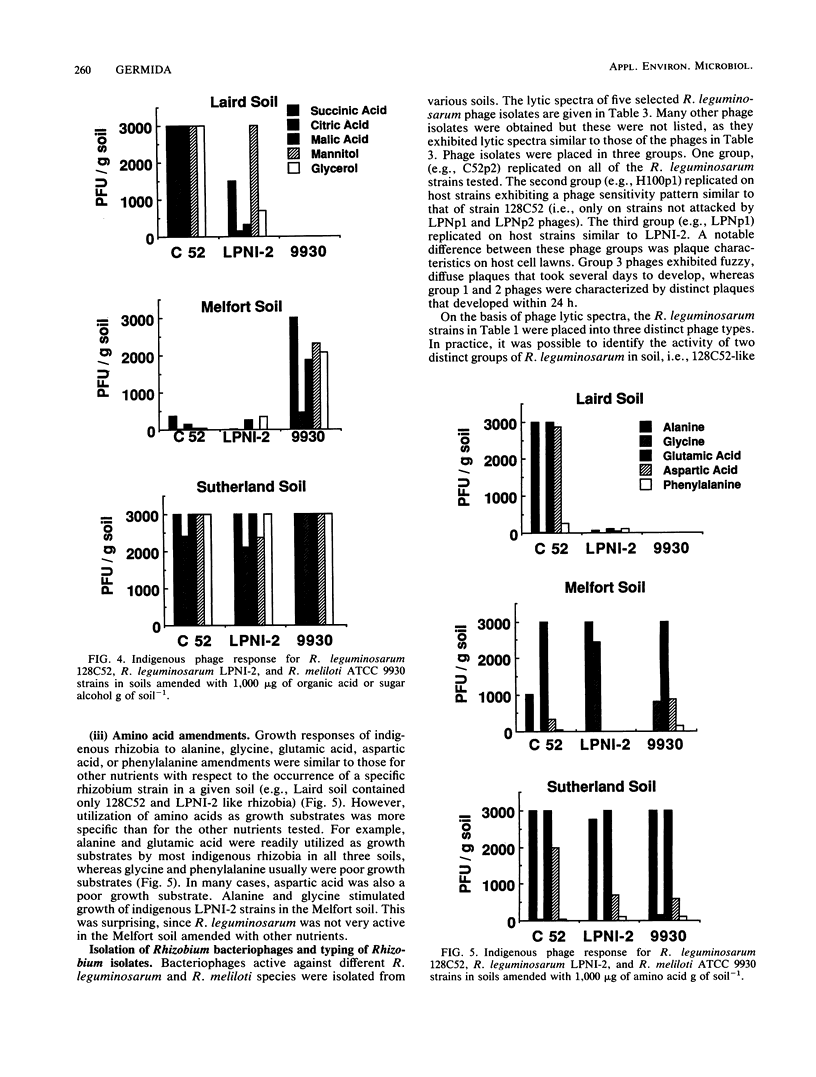
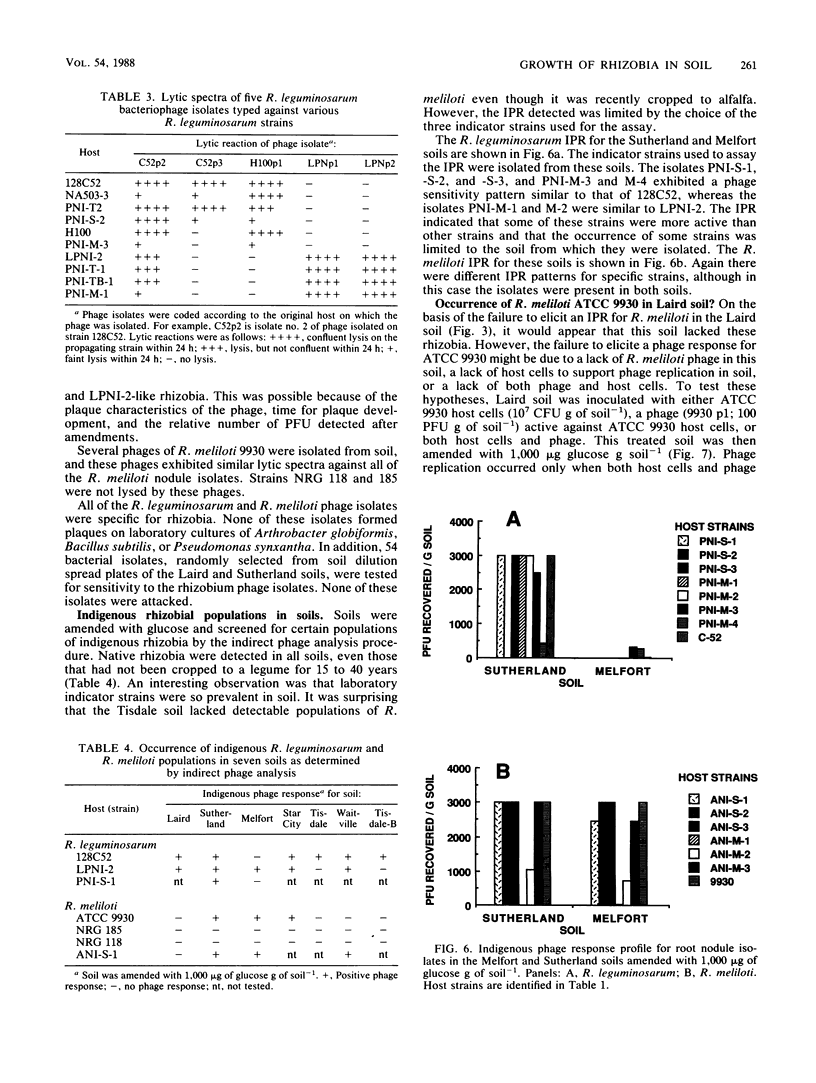
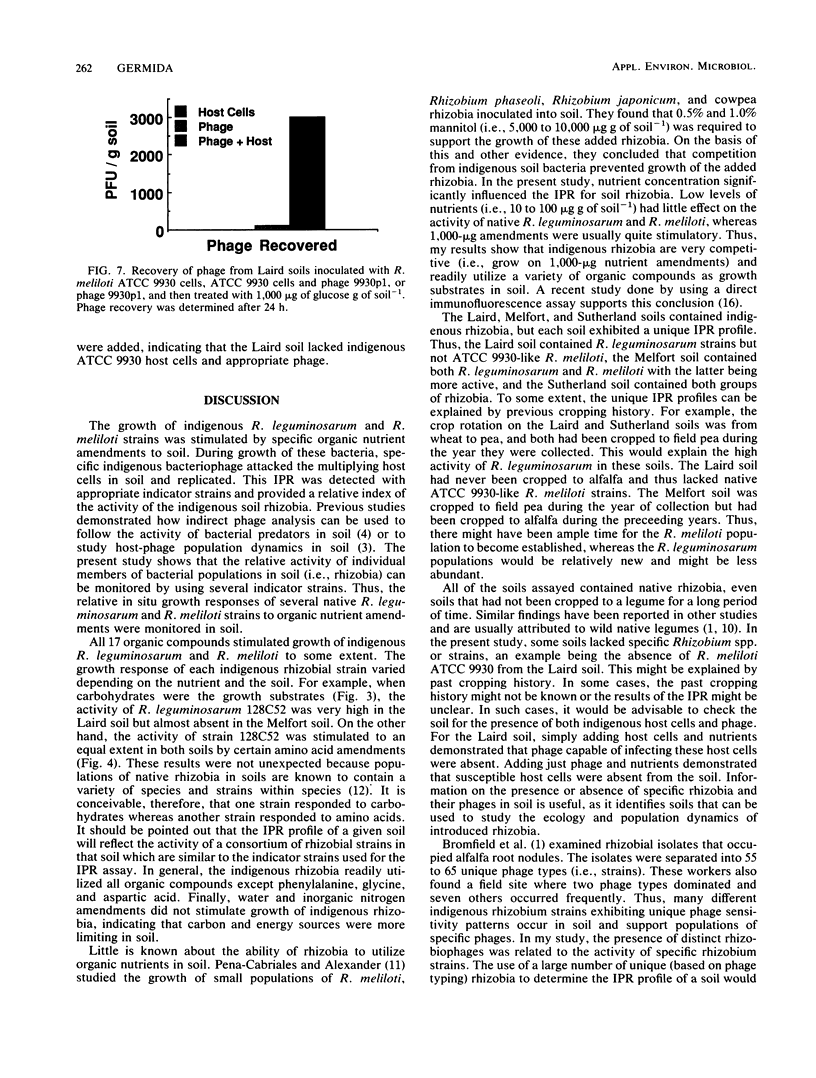
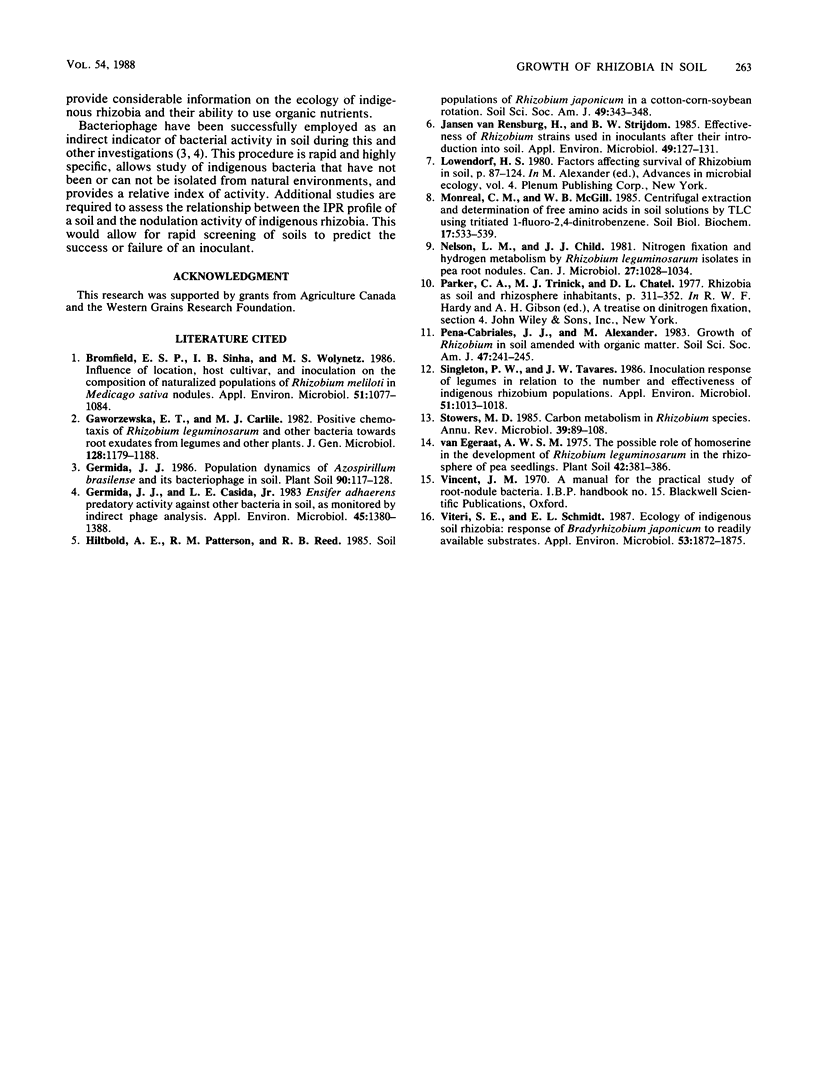
Selected References
These references are in PubMed. This may not be the complete list of references from this article.
- Bromfield E. S., Sinha I. B., Wolynetz M. S. Influence of Location, Host Cultivar, and Inoculation on the Composition of Naturalized Populations of Rhizobium meliloti in Medicago sativa Nodules. Appl Environ Microbiol. 1986 May;51(5):1077–1084. doi: 10.1128/aem.51.5.1077-1084.1986. [DOI] [PMC free article] [PubMed] [Google Scholar]
- Germida J. J., Casida L. E. Ensifer adhaerens Predatory Activity Against Other Bacteria in Soil, as Monitored by Indirect Phage Analysis. Appl Environ Microbiol. 1983 Apr;45(4):1380–1388. doi: 10.1128/aem.45.4.1380-1388.1983. [DOI] [PMC free article] [PubMed] [Google Scholar]
- Singleton P. W., Tavares J. W. Inoculation response of legumes in relation to the number and effectiveness of indigenous Rhizobium populations. Appl Environ Microbiol. 1986 May;51(5):1013–1018. doi: 10.1128/aem.51.5.1013-1018.1986. [DOI] [PMC free article] [PubMed] [Google Scholar]
- Stowers M. D. Carbon metabolism in Rhizobium species. Annu Rev Microbiol. 1985;39:89–108. doi: 10.1146/annurev.mi.39.100185.000513. [DOI] [PubMed] [Google Scholar]
- Viteri S. E., Schmidt E. L. Ecology of Indigenous Soil Rhizobia: Response of Bradyrhizobium japonicum to Readily Available Substrates. Appl Environ Microbiol. 1987 Aug;53(8):1872–1875. doi: 10.1128/aem.53.8.1872-1875.1987. [DOI] [PMC free article] [PubMed] [Google Scholar]
- van Rensburg H. J., Strijdom B. W. Effectiveness of Rhizobium strains used in inoculants after their introduction into soil. Appl Environ Microbiol. 1985 Jan;49(1):127–131. doi: 10.1128/aem.49.1.127-131.1985. [DOI] [PMC free article] [PubMed] [Google Scholar]


